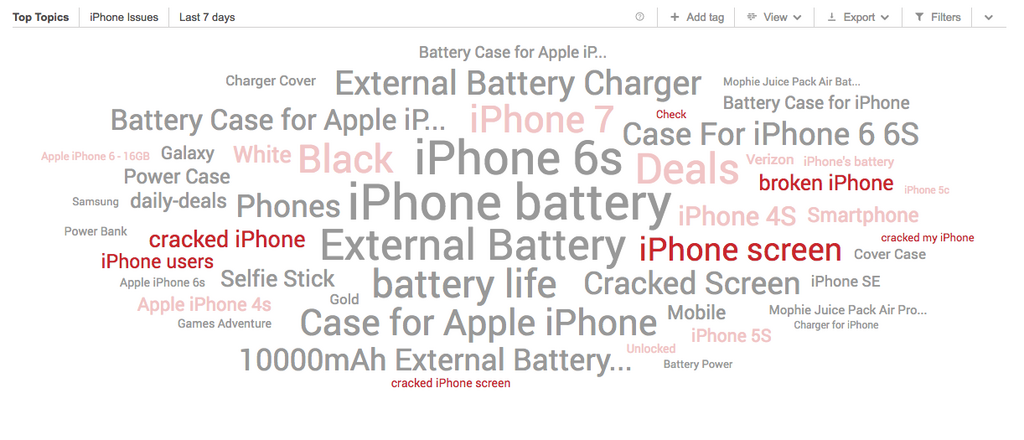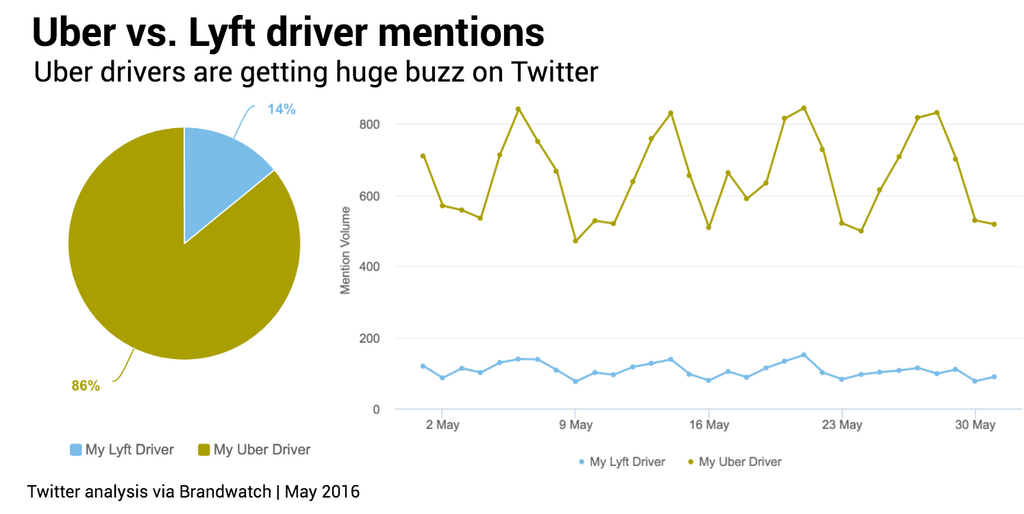10 Social Listening Tools and Who They’re Best for
By BrandwatchJul 14
Join us and boost your social media potential with our data-led event
Published September 2nd 2016
The term disruption is overused, but it’s not hard to see why. Plucky little start-ups are now able to turn an entire industry on its head.
Airbnb and Uber have fundamentally changed the way we vacation and get around. Newly minted companies are itching to become the next unicorn and the public’s appetite for technological innovation knows no bounds.
Established technology brands need to stay alert and need to be able to quickly adapt and innovate. Every day, millions of people take to social media to brag about their new iPhone, ask for laptop recommendations, and report software bugs.
Technology customers are naturally more likely to express their opinions online, being the tech savvy bunch that they are. It is important to engage with these conversations, as they influence a massive amount of the audience.
81% of consumers say online research is most important to their purchase decision
Tapping into this rich stream of information, social intelligence can surface consumer insights for the consumer technology industry in a variety of ways.
There is no shortage of online conversation when it comes to technology. Social networks, review sites, and forums are all rich sources of information. When you have a social intelligence platform at your disposal to pool all of those conversations, you can analyze and react in real-time.
The key is conducting social media research that goes beyond counting mentions of your brand. With the right approach, you can uncover robust insights that lead to a real business action.
It starts with asking the right questions. Brainstorming specific, targeted questions that can deliver actionable recommendations is the key.
Forget about how you are going to answer the questions – leading social intelligence platforms like Brandwatch are highly flexible – focus on what you want to achieve as a result of your research.

There are two main approaches to this research. First, you can conduct a planned analysis, where you are looking for an answer to a specific question. Alternatively, an exploratory analysis sees you listening to data to discover the story within.
This second technique can often involve a brand agnostic query, looking at a type of conversation across the product category.
Segment different topics as you read through the data. Cross one group of categories with another group of categories, and you may begin to see patterns and differences. For example, different author groups may have different concerns about a product.
Sentiment analysis can be used to gain an overview of a product and particular features. Deeper consumer insights for the consumer tech industry will be surfaced with a human analysis of the data.
This allows you to dive into more detail, categorizing common issues revealed by the data. Revealing these insights can allow the product roadmap to be prioritized in alignment with customer pain points.

Product innovation can be sparked by monitoring ideas and wishes of customers, in addition to their frustrations. An analysis of popular features of a competitor’s products will also be useful here.
It’s hard to get that feedback once someone has a laptop or a TV in their home. It’s hard to find another way to get feedback like that
Measuring share of voice provides an overview of your position within the market. Share of voice can be broken down further into different regions and demographics. This uncovers insights around audience segments, and whether you are gaining or losing ground in a specific area. This can also reveal opportunities for development, with more marketing budget assigned to growth areas.

Consumer technology brands can surface further consumer insights by monitoring brand associations, helping to reveal unique selling points and the strengths and weaknesses of the competition. The differences between two competitors can be highlighted for a comparative analysis.
PS4 has better games
The UI for the Xbox is trash
The Xbox’s reveal was the worst reveal in historyThere you go https://t.co/x84TtA9WVg
— SKRRT RUSSELL (@Khalifist) August 24, 2016
You can understand the performance of your online and offline marketing efforts easily with social intelligence. Consumers’ positive and negative reactions can be mined for more specific details. A demographic analysis of the data lets marketers know if their campaigns are resonating with the target audience.
Samsung’s advert for their new S7 phone is just the guy opening the box.
Galaxy S7: What A Great Box
— Jon Brady (@jonbradyphoto) March 1, 2016
Crucially, this knowledge is available in real-time, meaning brands can react quickly and intelligently, tweaking their campaigns to provide the maximum ROI.
The consumer tech industry is one of ever-changing updates and innovations, with new players entering the market on a dizzying scale. Brands that were once behemoths in the industry have withered and died due to not keeping up with the latest trends.
Keeping abreast of emerging trends is one of the most important consumer insights for the consumer technology industry. Knowing about emerging trends before your competitors is a vital part of being a modern, agile brand.
Google Trends can show you the waxing and waning of interest in a topic over time, but the insights are pretty basic. The tool is a worthwhile addition to the research mix. The problem is the lack of detail regarding the intent and sentiment of those searches.
Social intelligence can offer much deeper insights, with qualitative insights at a quantitative scale. Not only can you track the level of conversation over time, including retrospectively, but you can also dive deeper. A mixture of human and machine analysis will reveal sentiment, emotions, associated concerns, and desires.
Pretty concerning that the biggest games in VR so far seem to be built on the theory that it’s A-OK to make a sizeable % of players sick.
— Aaron San Filippo (@AeornFlippout) August 31, 2016
Consumer tech is one of the most innovative and competitive industries.
Social intelligence can be a vital part of the research mix for surfacing consumer insights for the consumer technology industry. It allows brands to stay ahead of the latest trends and keep an eye on competitors, as well as reach customers and prospects wherever they are talking on the web.
Offering up analysis and data on everything from the events of the day to the latest consumer trends. Subscribe to keep your finger on the world’s pulse.
Existing customer?Log in to access your existing Falcon products and data via the login menu on the top right of the page.New customer?You'll find the former Falcon products under 'Social Media Management' if you go to 'Our Suite' in the navigation.
Brandwatch acquired Paladin in March 2022. It's now called Influence, which is part of Brandwatch's Social Media Management solution.Want to access your Paladin account?Use the login menu at the top right corner.